We use cookies to make your experience better. To comply with the new e-Privacy directive, we need to ask for your consent to set the cookies. Learn more.
-
Background : The 4C's
-
The Other facets of diamond
Background : The 4C's
- Background
A diamond is a form of carbon. The way the atoms are arranged makes the difference between a diamond and another type of carbon. Natural diamonds are formed at a depth between 85 and 115 miles (equivalent to 136 to 184 km) in the Earth's mantle, due to a combination of high pressure, high temperature and the absence of oxygen. Most natural diamonds take millions of years to appear at the Earth’s surface. It is also noticeable to say that diamond is the hardest material on Earth.
Rough diamonds are mainly found in Southern Africa, Australia, Siberia, Canada, and Brazil. The color is typically yellow, grey, or brown to colorless. Rarely rough diamonds can be discovered as blue, green, black, pink, violet, orange and the rarest are red.
Learning about diamonds begins with an understanding of the four main characteristics known as the 4 C’s: Carat (weight measure), Color, Clarity, and Cut. These features help anyone from the rough expert to the final consumer to grade, compare, and eventually price diamonds. Finding the diamond that suits you is a tradeoff between these features, taking into account the amount of money you want to spend.
In a few words, the price of a diamond is based on its rarity and the 4C’s define the diamond’s rarity and uniqueness. The diamond is a very expensive commodity, mainly due to its rarity.
“No two diamonds are alike” - Clarity
The clarity describes the quality of a diamond in relation to the internal presence of so-called inclusions, and surface appearances known as blemishes. The presence of inclusions occurs naturally within the crystal structure, while the presence of blemishes comes from both nature and/or human manipulation (such as cutting).
Almost every diamond has some inclusions or blemishes. A diamond is graded under 10x magnification. The table below summarizes what can be detected with a 10x loupe for each clarity grade, see figure 6. The higher the clarity of a diamond, the more rare and valuable it is.
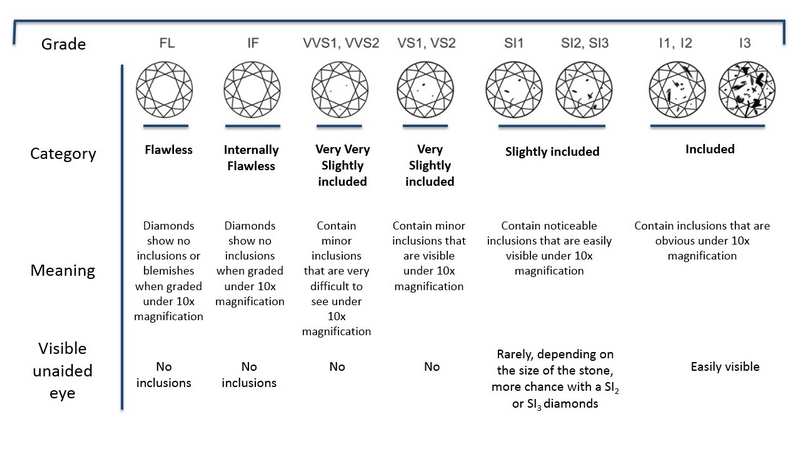
FLAWLESS (FL)
Diamonds show no inclusions or blemishes when graded under 10x magnification.
INTERNALLY FLAWLESS (IF)
Diamonds show no inclusions (or smaller than 5 µm) when graded under 10x magnification.
VVS1
VVS = Very Very Small Inclusion(s)
VVS2
Contain minor inclusions that are very difficult to see under 10x magnification
VS1
VS = Very Small Inclusion(s).
VS2
Contain minor inclusions that are visible under 10x magnification
SI1
SI = Small Inclusion(s).
Contain noticeable inclusions that are easily visible under 10x magnification, invisible to the naked eye. SI3 is not recognised by GIA or HRD laboratories but is commonly used by the diamantaires and listed on the Rapaport.
SI2
SI3
I1, I2, I3
Contain inclusions that are obvious under 10x magnification.
- Color
Depending on their individual composition, diamonds may show different hues in their color. The brown and yellow shades, the two most popular colors, are due to the presence of nitrogen within the crystal structure. The difference between two grades is subtle and complex to see with the untrained eye.

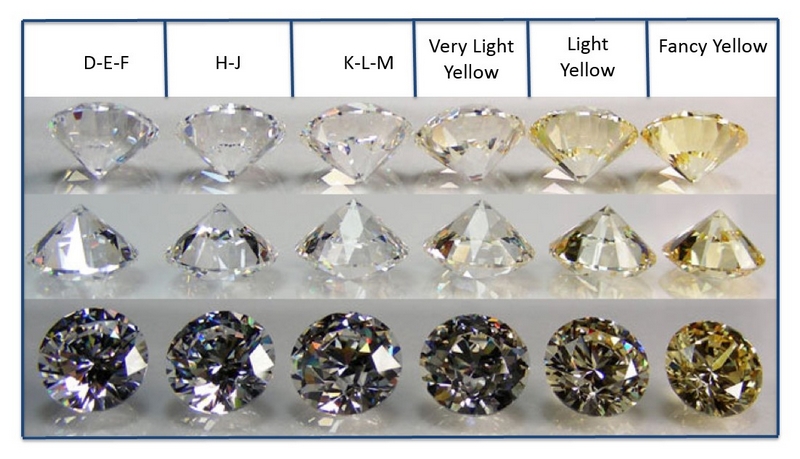
Fancy colors
As noted above the two main colors that appear in diamonds are brown and yellow. Diamonds may show different color such as green, gray, orange, purple, and the rarest colors are pink, blue, and especially red. Those colors are so-called the fancy colors. There are nine different grades for fancy color diamond from Faint to Vivid.
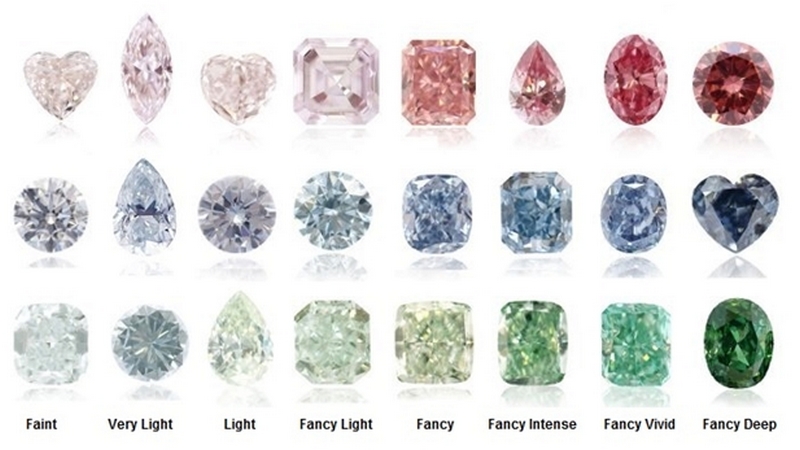
Diamonds at both ends of the color intensity scale – colorless and fancy colors- are the rarest, and so the most valuable. The fancy color diamonds are mostly valued with the color and its intensity. For instance a fancy vivid blue diamond can be way more expensive than a colorless diamond.
- Carat
The number of carats represents the weight of a diamond. One carat is the equivalent of 0.2 grams, so the weight of a five carat diamond is one gram. A carat is divided into 100 points, so usually when the diamond is lower than 1 carat, let’s say half a carat, it may be referred to as a 50 point diamond.
As mentioned previously, the rarity sets the price of a diamond. Generally as a diamond’s weight increases, so does its rarity and value. The bigger the diamond is, the rarer it is (considering the other factors remain the same). Therefore, the price of a diamond will increase exponentially when its size increases.
There is a big correlation between the carat weight and the cut. Depending on the cut, two diamonds with an identical weight may have different size appearance.

- Cut
The cut of a diamond refers to the style chosen when shaping a diamond during the polishing process. The cut refers to the shape (brilliant, emerald, Asscher, pear, oval, etc.). It also denotes the proportions, symmetry, angles and polish of the diamond. This will in turn define how brilliant, beautiful and valuable the diamond is. When the proportions or symmetry are off – such as a shallow or deep pavilion – light leakage will occur, therefore, the diamond will be less brilliant.
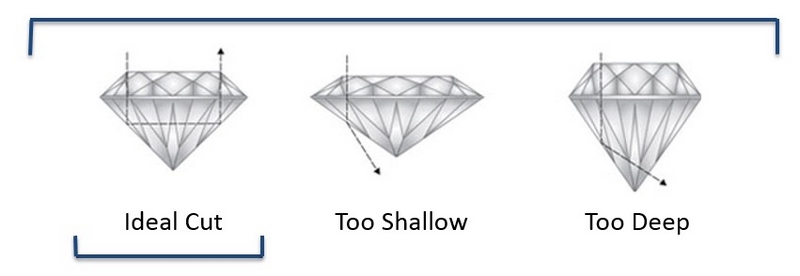
The cut is a parameter that is determined by the skill of the craftsman’s hand. Achieving the best cut for an expert is not about increasing or reducing the number of facets; instead it is about using skills to deliver maximum brightness, sparkle and pattern from within the diamond. The two mains goals of an expert are: providing the most exquisite brilliance and maximizing the size appearance.
There are three main cut styles namely the brilliant cut, the step cut and the mixed cut represented. The brilliant-cut is the most popular cut given to diamond. Stones whose outlines are either square or rectangular and whose facets are rectilinear and arranged parallel to the girdle are known as step-cut stones (e.g. stones with an emerald or an Asscher cut). Mixed-cut is a combination of brilliant- and step-cut; a radiant cut is an example of mixed-cut.
The Other facets of diamond
- Brightness, fire and pattern: Elements of brilliance
According to the GIA’s research and development, brilliance in a diamond is the result of the combination of three components namely brightness, fire, and pattern. Those three visual characteristics are evaluated by expert without magnification. This combination will ensure that the diamond matches its weight and that the proportions are correctly balanced in a well-cut diamond
Brightness: The return of white light to the eye
Fire: Term used to describe flashes of color resulting from spectral separation of white light into rainbow flashes.
Pattern: The flashes of light reflected from the crown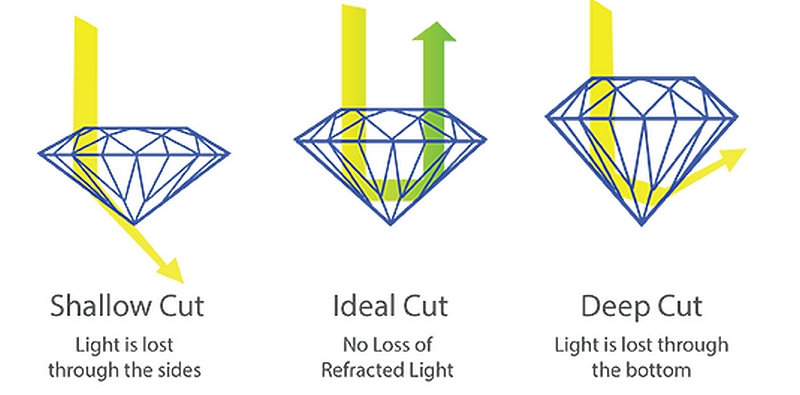
The first thing the human eye notices in a diamond is the sparkle or light performance. This is the reason why brilliance is highly important. Therefore, when cutting a diamond, brilliance is the most important factor. Since it is the most important characteristic of buying a diamond, making the largest, and most brilliant looking diamond possible is the priority.
- The diamond shapes
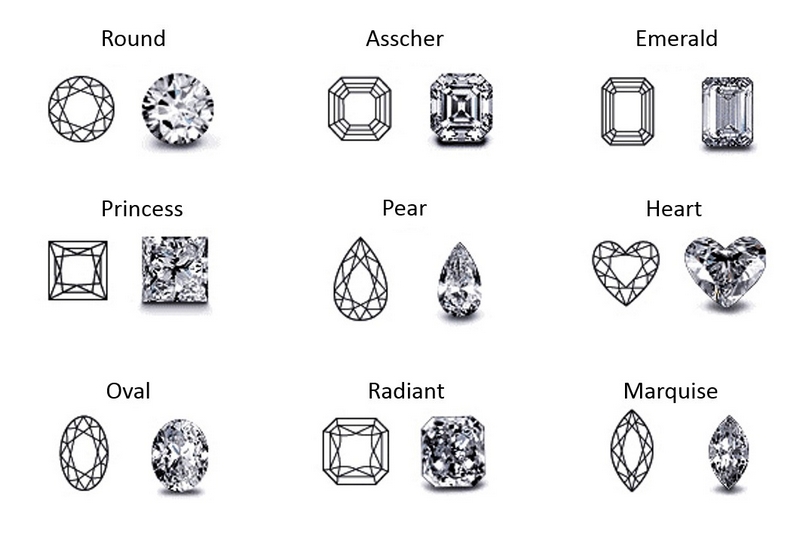
- Diamond Grading & Laboratories
Independent diamond laboratories provide diamond grading certificates. A diamond’s grading certificate is like the ID of this diamond. There are several laboratories that grade diamonds. The most renowned laboratories are the Gemological Institute of America, called GIA, HRD and IGI. These institutions tend to be the most reliable.
Below you can find examples of GIA and HRD certificates.
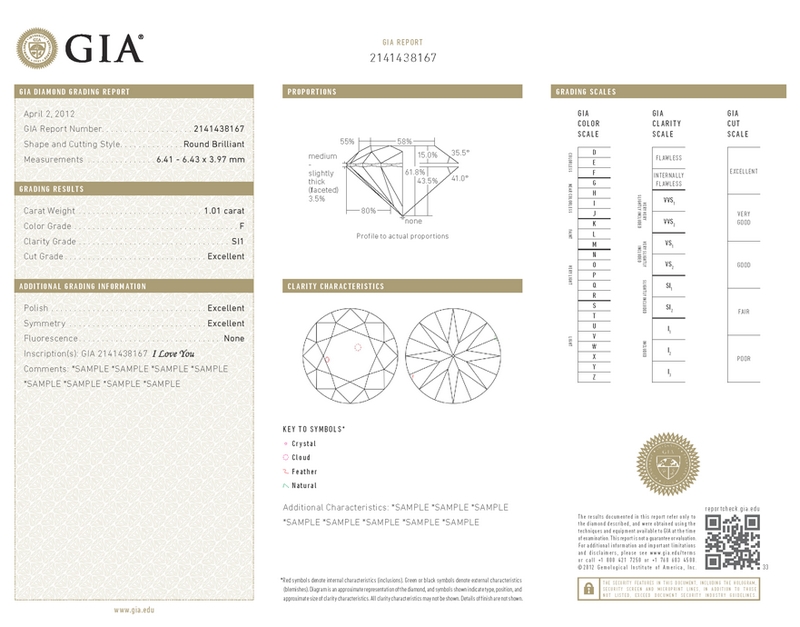
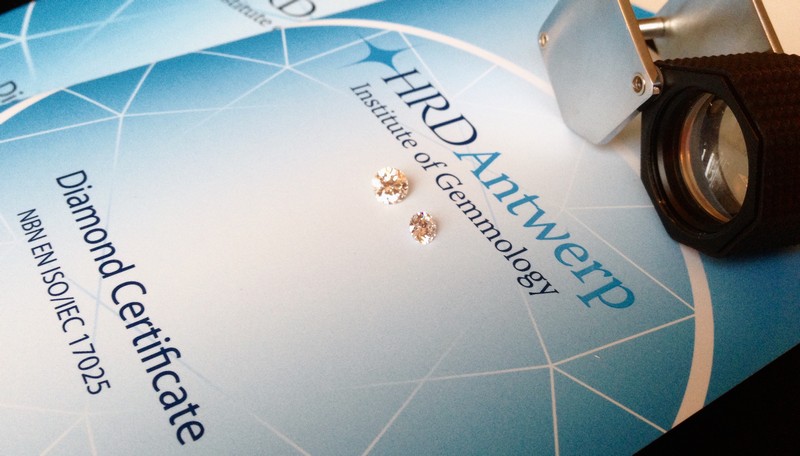
- Fluorescence
For most people who buy a diamond, fluorescence will not be an issue but they might be confused by the the term. The fluorescence is the result which the incidence of ultraviolet (UV) light has on a diamond’s appearance. Under a UV light, in a night club for instance, white clothing will reflect the UV light,. Some diamonds will show the same effect to some extent, when exposed to UV rays.
From research submitted by a laboratory, we know that around 25 to 35% of diamonds exhibit some degree of fluorescence. However, only 2 or 3% of diamonds may have their visual appearance affected by fluorescence. In very few cases (less than 0.2% of the fluorescent diamonds), the stone may have an oily or milky appearance.
Most often, the visible color of fluorescent diamonds is blue, a complementary color to yellow, which is the most common tinted hue in diamonds. Only in 5% of the cases, the reaction to fluorescence can be another color such as yellow, white, green, or even red as it is in the famous blue Hope diamond.

- Diamond as an investment
Over the past few years, the value of diamonds has been stable, even showing a slight increase. Recently, the value of some fancy colored diamonds has dramatically increased because of the rarity and demand.
Many experts consider diamonds as a good investment for the following reasons. Firstly, it is a great value in a small rock. Secondly, capital gains on sale can be highly tax efficient. Thirdly, one can be sure of a positive return on investment in the medium (5 to 8 years) to long term (10 to 15 years). Last but not least, they mention that diamonds are a reassuring investment during crisis. Therefore, diamonds can be considered a safe-haven investment.
 Français
Français 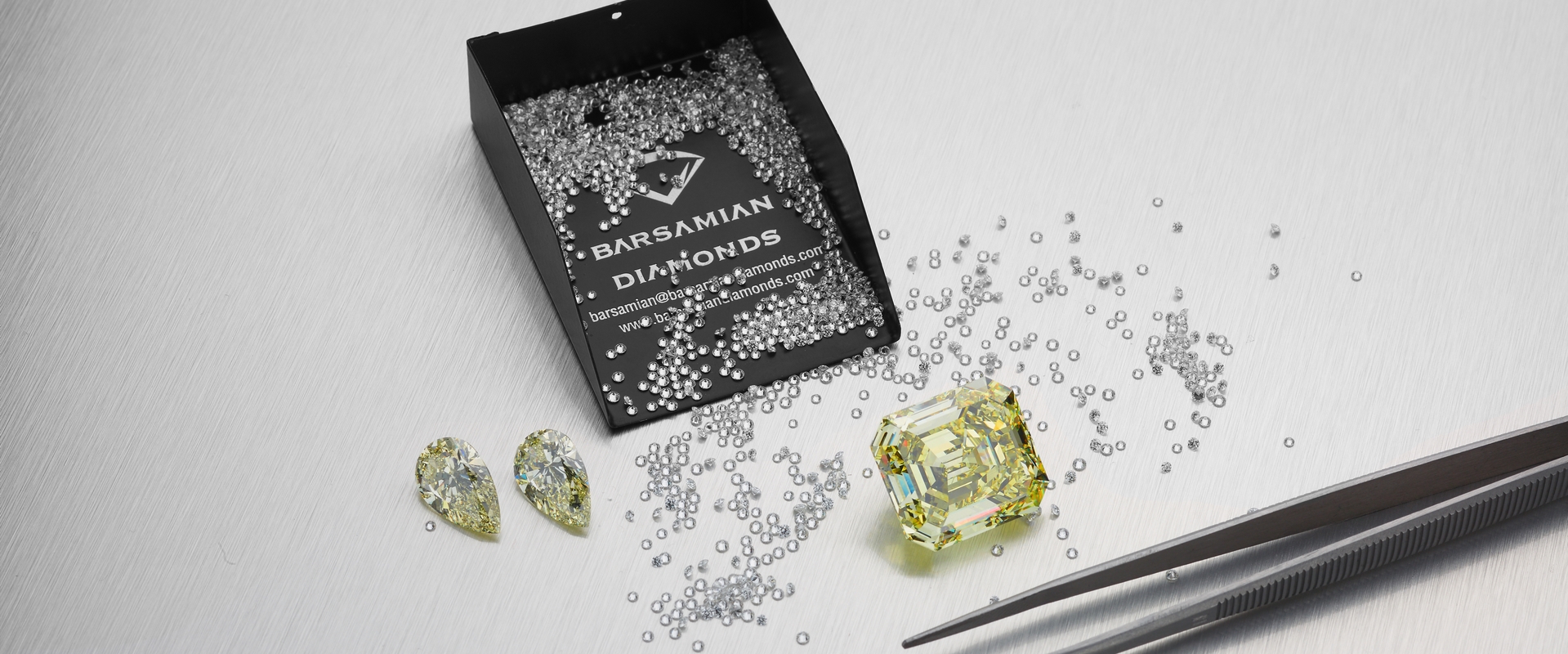
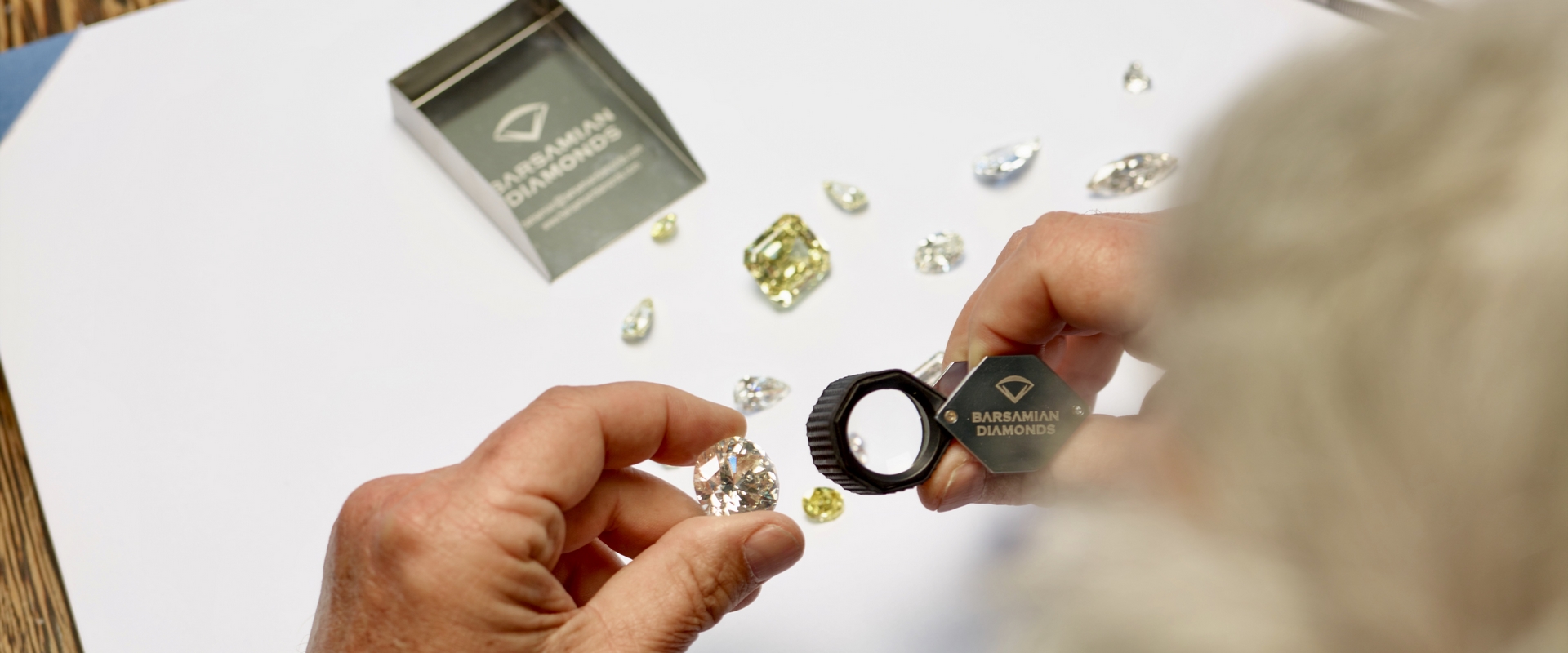
 My Forest Armenia is a non-profit organization that focuses on the reforestation on our own European continent, planting trees is the best natural solution to fight global warming bring back the loss of biodiversity.
In a wider plan to mitigate our CO2 emissions, Barsamian Diamonds has decided to support My Forest Armenia as a corporate partner by planting 60,000 trees in the Jrashen area (Armenia) from 2021 to 2024.
My Forest Armenia is a non-profit organization that focuses on the reforestation on our own European continent, planting trees is the best natural solution to fight global warming bring back the loss of biodiversity.
In a wider plan to mitigate our CO2 emissions, Barsamian Diamonds has decided to support My Forest Armenia as a corporate partner by planting 60,000 trees in the Jrashen area (Armenia) from 2021 to 2024.